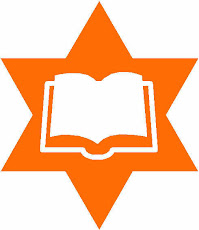Several weeks ago, our congregation had its annual “Disability Awareness Shabbat.” Instead of a specific d’var torah/”words on the torah” (aka “sermon”), a congregant gave a drash/teaching on her experience as the parent of a child with multiple disabilities. Her children are about the same age as ours (mid- to late-twenties) and I’ve known her “somewhat” since we were much younger parents.
She spoke about the journey that she and her husband have been on since her child which diagnosed within a couple of weeks after birth with viral encephalitis – and the changes resulting from it: cognitively and physically.
She spoke eloquently about the grieving process that she and her husband went through:
The inevitable questions of how and why this could have happened as well as the anger and sadness took time to work through. Any person who has ever experienced a loss understands these emotions and can appreciate what it takes to deal with these feelings. Fortunately, we had a strong relationship and we understood the importance of finding something positive in dealing with this life altering experience. We also understood that our attitude towards our child would influence our [other] children’s attitude as well.She spoke about the caring people along their journey who supported them; people who cared for their child and chose to establish their own relationship with him.
Even though there have been many caring people and her child – now an adult – has been able to have a quality of life surpassing that which was originally projected, my friend admitted:
All this being said, having a child like ours does not diminish the challenge and sometimes isolation we feel as parents. We have developed some wonderful friendships with other families who parent a child with special needs. It is within this community that we can share our experiences and know that we are not alone and can help one another.She ends her drash by quoting from My Grandfather’s Blessings by Dr Naomi Reden.
In her book, she describes an oyster as being soft, tender, and vulnerable. Without the sanctuary of its shell it could not survive. But oysters must open their shells in order to “breathe” water. Sometimes while an oyster is breathing, a grain of sand will enter its shell and become a part of its life from then on.
Such grains of sand cause pain, but an oyster does not alter its soft nature because of this. It does not become hard and leathery in order not to feel. It continues to entrust itself to the ocean, to open and breathe in order to live. But it does respond. Slowly and patiently, the oyster wraps the grain of sand in thin translucent layers until, over time, it has created something of great value in the place where it is most vulnerable to its pain. A pearl might be thought of as an oyster’s response to its suffering. Not every oyster can do this. Oysters that do are more valuable to people than oysters that do not.Sand is a way of life for an oyster. If you are soft and tender and must live on the sandy floor of the ocean, making pearls becomes a necessity if you are to live well.
She ends with her own bit of wisdom:
Disappointment and loss are a part of every life. Many times we can put such things behind us and get on with the rest of our lives. But not everything is amendable to this approach. Some things are too big or too deep to do this, and we will have to leave important parts of ourselves behind if we treat them in this way. These are the places where wisdom begins to grow in us. It begins with suffering that we do not avoid or rationalize or put behind us. It starts with the realization that our loss, whatever it is, has become a part of us and has altered our lives so profoundly that we cannot go back to the way it was before.
Something in us can transform such suffering into wisdom. The process of turning pain into wisdom often looks like a sorting process. First we experience everything. Then one by one we let things go, the anger, the blame, the sense of injustice, and finally even the pain itself, until all we have left is a deeper sense of the value of life and a greater capacity to live it.
It is with this thought that I believe our child has become my pearl.
I learned a lot that morning, listening to my friend share her pearls of wisdom with all of us. I especially like the acknowledgement that it's not always possible to "put it behind me and move on."... that feelings need to be experienced honestly before one can begin to let them go. And yet, over time, it is possible to value and life life more deeply and completely.
Wow.





No comments:
Post a Comment